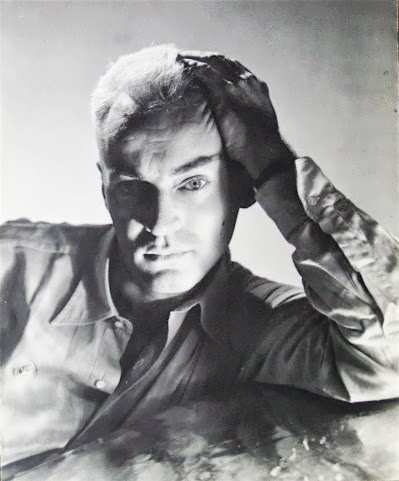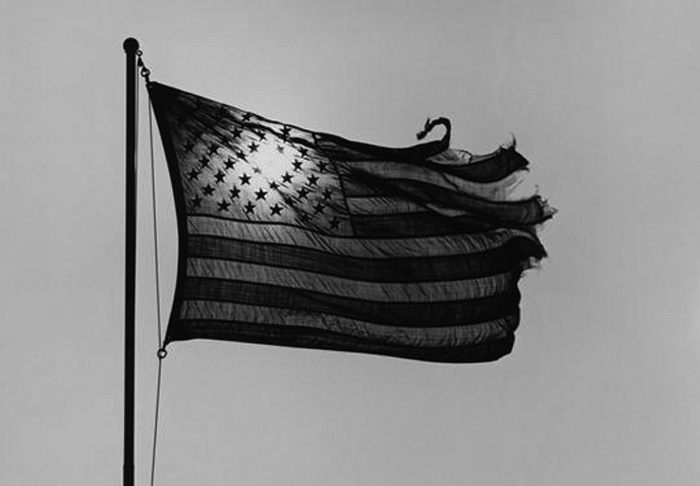 Self-portrait, 1959
Self-portrait, 1959
Bruce Davidson Bruce Davidson was born on born September 5, 1933 in Oak Park, Illinois. At age 10, his mother built him a darkroom in their basement and Davidson began taking photographs. Soon after, he approached a local photographer who taught him the technical nuances of photography, in addition to lighting and printing skills. His artistic influences included Robert Frank, Eugene Smith, and Henri Cartier-Bresson.
At 16, Davidson won his first major photography award, the Kodak National High School snapshot contest, with a picture of an owl at a nature preserve. After he graduated from high school, Davidson attended the Rochester Institute of Technology and Yale University, where one of his teachers was artist Josef Albers. Davidson showed Albers a box of prints of alcoholics on Skid Row; Albers told him to throw out his “sentimental” work and join his class in drawing and color. For his college thesis, Davidson created a photo essay that was published in LIFE in 1955, documenting the emotions of football players behind the scenes of the game.
Following college, Davidson was drafted into the US Army, where he served in the Signal Corps at Fort Huachuca, Arizona, attached to the post’s photo pool. Initially, he was given routine photo assignments. Undaunted, Davidson created out of seemingly mundane material unique photo studies. An editor of the post’s newspaper, recognizing his unique talents, asked that he be permanently assigned to the post newspaper. There, given a certain degree of autonomy, he was allowed to further hone his talents. Later, stationed in Paris, he met Henri Cartier-Bresson, a later colleague with the Magnum photo agency, sharing his portfolio and receiving advice from Cartier-Bresson. While in France, Davidson produced a photo essay on the Widow of Montmartre, an old Parisian woman who was married with an impressionist painter.



 Widow of Montmartre, Paris, 1956
Widow of Montmartre, Paris, 1956



 The Dwarf, 1958
The Dwarf, 1958
 Couple necking on pole at basement party while girl looks on, from Brooklyn Gang, 1957
Couple necking on pole at basement party while girl looks on, from Brooklyn Gang, 1957
 Brooklyn Gang and the American writer Norman Mailer, 1959
Brooklyn Gang and the American writer Norman Mailer, 1959
 Brooklyn Gang. Bengie and friends at Bay Twenty-two, Coney Island. Clockwise from left: Bengie, Junior, Bryan, Lefty, 1959
Brooklyn Gang. Bengie and friends at Bay Twenty-two, Coney Island. Clockwise from left: Bengie, Junior, Bryan, Lefty, 1959






 Brooklyn Gang, 1959
Brooklyn Gang, 1959
 A group of civil rights demonstrators led by Martin Luther King Jr. marches from Selma to Montgomery, Ala., during the civil rights movement
A group of civil rights demonstrators led by Martin Luther King Jr. marches from Selma to Montgomery, Ala., during the civil rights movement
 Martin Luther King Jr. at a press conference declaring the Freedom Rides will continue. John Lewis (left) was beaten by KKK earlier in Montgomery, Alabama, 1961
Martin Luther King Jr. at a press conference declaring the Freedom Rides will continue. John Lewis (left) was beaten by KKK earlier in Montgomery, Alabama, 1961
 A Freedom Rider sits in the bus during a rain storm, with National Guardsmen outside, 1961
A Freedom Rider sits in the bus during a rain storm, with National Guardsmen outside, 1961
 National Guardsmen protect the Freedom Riders during their ride from Montgomery to Jackson, Mississippi.
National Guardsmen protect the Freedom Riders during their ride from Montgomery to Jackson, Mississippi.
 The Feedom Rides – from Selma to Montgomery. Here a rider and a National Guardsman asleep on the bus, 1961
The Feedom Rides – from Selma to Montgomery. Here a rider and a National Guardsman asleep on the bus, 1961
 Diana Ross and another member of the Supremes catch some rest in bunks at the Apollo Theater in New York City in 1965.
Diana Ross and another member of the Supremes catch some rest in bunks at the Apollo Theater in New York City in 1965.
 This photo is taken from Davidson’s series East 100th Street, the result of his spending two years documenting the people inhabiting the East Harlem street, 1966
This photo is taken from Davidson’s series East 100th Street, the result of his spending two years documenting the people inhabiting the East Harlem street, 1966
 A couple enjoys a day out in New York City’s Central Park. During the 1990s, Davidson spent four years exploring and documenting the grandeur of the city’s treasured preserve.
A couple enjoys a day out in New York City’s Central Park. During the 1990s, Davidson spent four years exploring and documenting the grandeur of the city’s treasured preserve.
 Photo by Henri Cartier-Bresson
Photo by Henri Cartier-Bresson

















































































